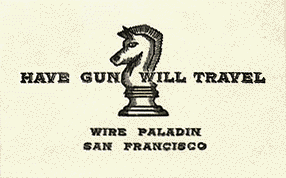212 – Climbing Up The Corporate Food Chain: “You’re Either A Money-Maker Or A Killer!”
Podcast: Play in new window | Download (Duration: 37:39 — 34.9MB)
Subscribe: Apple Podcasts | Spotify | RSS | More

Kurt Sutter is the guy behind “Sons of Anarchy.” Back in 2012 he did a documentary on the Aryan Brotherhood for the Discovery Channel series, Outlaw Empires.
The Aryan Brotherhood was born in the 1960’s and grew from a prison system based band of criminals to one of the most feared groups in history. One person in the documentary, John (one of the founders) revealed how the group finally realized they needed a more structured leadership. By the 1980’s they had established a 3-man commission. He was one of the commissioners. An articulate man imprisoned for life, he said, “There’s only two ways to get to the top. You either earn your way or kill your way. You’re either a money-maker or a killer.”
Don’t go thinking I know my way around climbing to the top of a criminal organization. I have no firsthand knowledge or experience. I have seen The Godfather and plenty of documentaries on organized crime so I understand the basic concepts.
In season 1 of Vikings (a History Channel TV series that is now in season 2), the main character, Ragnar Lothbrok, engaged in a one-on-one battle with Earl Haraldson, the local chieftain. The victor would be acknowledged by the society as the ruler. Ragnar killed Earl Haraldson and instantly became the chieftain. Survival of the fittest and all that.
In the business sector it’s not terribly different, except it’s less literal and more metaphorical. Power, fear and authority in the corporate setting often stem from a person’s ability to do you harm. Hopefully, no literal blood is shed. It’s bad enough to have a career that hemorrhages to death. At least you can go find another one and start over though. If you get shanked in prison and die…or if you battle to the death with a subordinate who wants your kingdom, let’s just say your opportunities for redemption are dead, too.
As for the money-maker or the earner, we all appreciate the person who can get us things we can’t otherwise find. From Radar on MASH who could work magic to get the supplies lacking at the 4077, to the rainmaker who brings in new clients to the law firm – and all the countless examples in between – we all have learned the value of the person who can bring in business or increase the assets. They become indispensable to the organization. They may become indispensable to us, too.
Money-Maker or Killer: Which One Are You?
Don’t confuse money making with just sales. It’s not merely about revenue generation. It’s about being valuable and other people seeing your value. It’s also why killing your way to the top works so well. It gains you instant visibility. And notoriety. Doing good work tends to keep you off the radar like a referee in a game who does a great job. You can become invisible if you report to work daily and do a good job. You can’t remain anonymous if you’re terrorizing people.
Now I don’t have to tell you that if you’ve got enough cold water in your veins to instill fear among your cohorts, you’re eventually going to encounter somebody whose blood runs even colder. Then what will you do? Or you may go after the wrong person, at the wrong time and find yourself lying in a pool of your own blood. Ruthlessness is a hard road to follow in getting ahead, but history is filled with success stories.
But there’s another kind of killer in the business world, the person capable of besting the competition. We tend to focus merely on people inside the company who get ahead at the expense of their peers. That’s a crummy way to go. Instead, it’s possible to add value to your organization because you have an ability to defeat the competition, or contribute heavily toward that cause.
Money makers and killers. It’s two completely different personalities, skill sets and inclinations. But both can achieve success others only dream of.
What if you’re neither of these? What if you’re not resourceful in bringing value and you’re not a killer either? Well, kiss your butt good-bye. You’ve got to add value somewhere, somehow. Then, you’ve got to be visible enough to gain proper recognition. Else…you’ll wind up like the millions who suffer daily with the frustration of feeling under-appreciated.
Some tips discussed in today’s podcast:
- You have to identify and faithfully serve your number one customer. It’s not who you think it is.
- You have to be able to see problems and solutions.
- You have to be able to clearly communicate your ideas, and sell them.
- You must believe in yourself and your ideas. It’s a confidence you must cultivate.
- You can’t be bashful, but you can’t be overbearing either. You have to know when/where to pick your spots.
- You must forge helpful alliances. Successful people don’t go it alone.
- Visibility is key. You have to help others see your value else it will go unnoticed.
- Your value is often determined by what others value, not what you value.
- Life is not fair, but you can improve your odds by being capable, smart, confident and visible.
- Gripe guts and malcontents won’t rise to the top and if they do, they won’t stay there long. Don’t join them. Avoid them.
- Promote other people. Climb the ladder with colleagues. You need their help. Besides, it broadens your scope of influence.
- It’s a marathon with countless sprints built in along the way. Be prepared to break away from the pack in an instant. You never know when your opportunity will come.
- Do not let it go to your head. Keep your head on a swivel and stay on top of your game. Keep building value in your career.
- Success is never final. Be prepared to suffer a setback.
- Failure isn’t final either. Well, it doesn’t have to be. Be resilient. Bounce back. Be a fighter!

212 – Climbing Up The Corporate Food Chain: “You’re Either A Money-Maker Or A Killer!” Read More »




